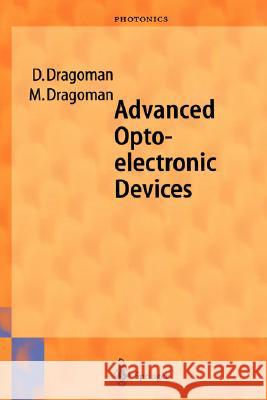Advanced Optoelectronic Devices » książka
Advanced Optoelectronic Devices
ISBN-13: 9783540648468 / Angielski / Twarda / 1998 / 424 str.
Optoelectronics will undoubtedly playamajor role in the applied sciences of the next century. This is due to the fact that optoelectronics holds the key to future communication developments which require high data transmission rates and of a extremely large bandwidths. For example, an optical fiber having a diameter few micrometers has a bandwidth of 50 THz, where an impressive number of channels having high bit data rates can be simultaneously propagated. At present, optical data streams of 100 Gb/s are being tested for use in the near future. Optoelectronics has advanced considerably in the last few years. This is due to the fact that major developments in the area of semiconductors, such as hetero structures based on III-V compounds or mesoscopic structures at the nanometer scale such as quantum weHs, quantum wires and quantum dots, have found robust applications in the generation, modulation, detection and processing of light. Major developments in glass techniques have also dramaticaHy improved the performance of optoelectronic devices based on optical fibers. The optical fiber doped with rare-earth materials has aHowed the amplification of propagating light, compensating its own los ses and even generating coherent light in fiber lasers. The UV irradiation of fibers has been used to inscribe gratings of hundreds of nanometer size inside the fiber, generating a large class of devices used for modulation, wavelength selection and other applications."











